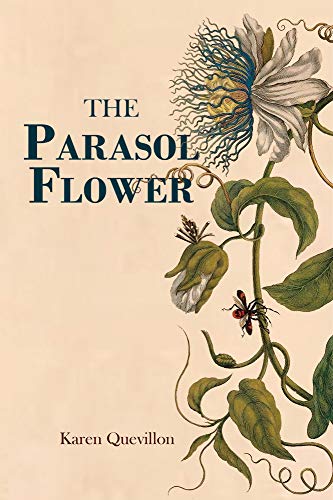The Parasol Flower
The best historical fiction seamlessly blends history and fiction. It informs about society in a particular bygone time and engrosses the reader with the humanity of individual characters: their biographies, adventures, tribulations, and triumphs. Quevillon’s debut novel The Parasol Flower masterfully merges known facts and unknown fancy.
Set in late-19th-century Malaysia—then a British colony—the novel bores into colonial exploitation and imperial arrogance but never bores with its vivid characters, whose struggles come alive on the page. The protagonist, Hannah Inglis, is a painter, trapped in a marriage to Colonel George Inglis, a British official who transports her to the expat community of a Malay village where he’s posted. George, like most of the privileged Brits who rule the colony, is utterly opposed to his wife’s pursuit of art and, indeed, to any aspiration she might have, other than tea parties with the proper English wives in residence.
Hannah, undeterred, paints in the jungle, searching for a legendary plant (the parasol flower) and accompanied by a local Sikh policeman who’s an amateur botanist. Her compatriots are horrified by her lack of propriety, except for a wealthy eccentric Englishwoman, Eva Peterborough. Eva is conducting research for a scientific treatise. She becomes a patron of Hannah’s art until scandal erupts.
Quevillon splits narration between two eras: Hannah’s Victorian period and contemporary times, in which a graduate student, Nancy Roach, discovers Hannah’s paintings and letters. The novel alternates between two passionate quests: Hannah’s determination to be free of constraints on her independence and Nancy’s hunt for information about an artist whose work grips her imagination. Through these disparate viewpoints, the reader gradually learns background context and subtext, experiencing both Hannah’s frustration and Nancy’s curiosity.










